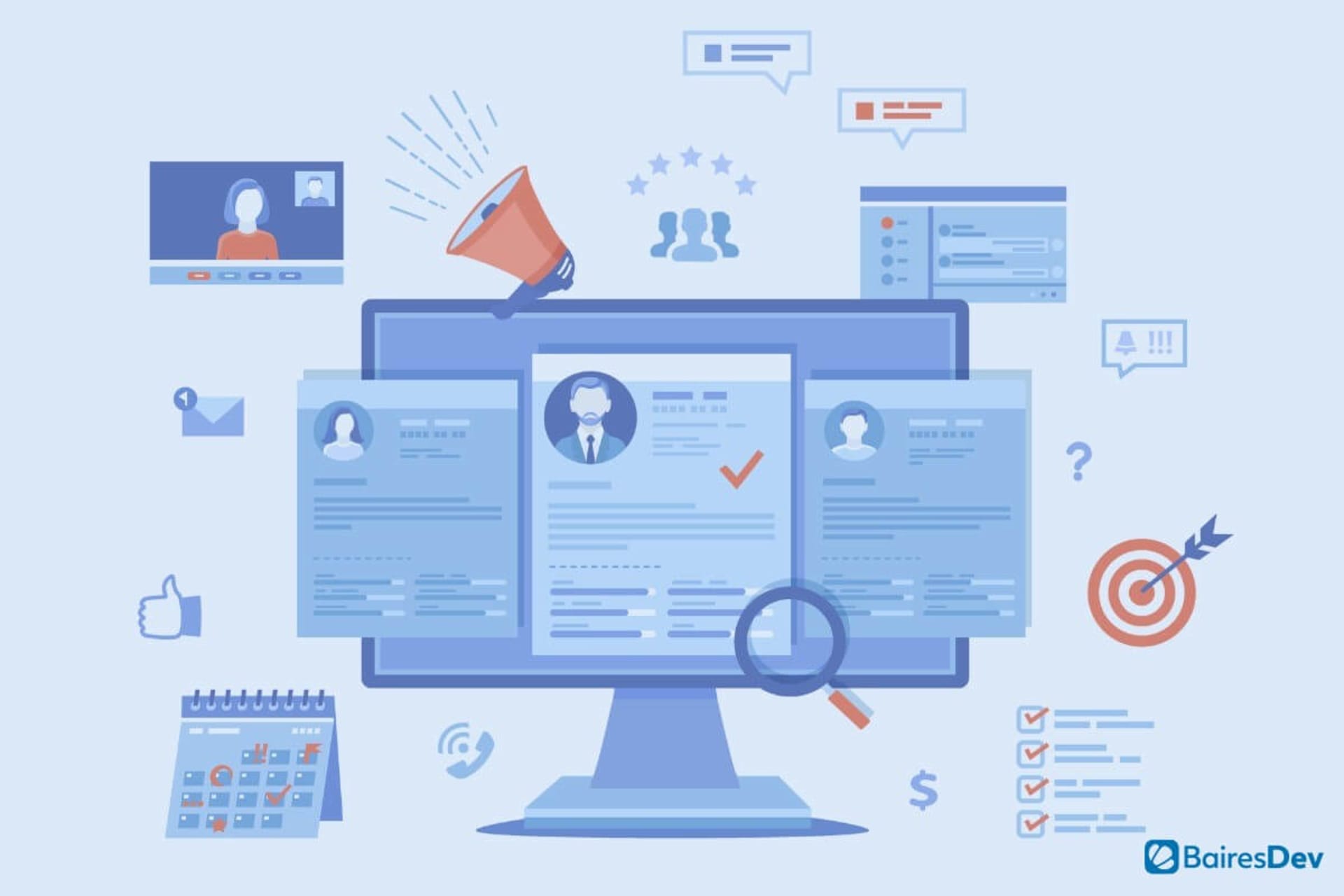More than 98% of Fortune 500 companies use recruitment software. But they’re not the only ones who are leveraging technology to solve their staffing holes and problems.
According to a recent Recruiter Nation survey, employers are looking to improve efficiency by leveraging a range of tools that incorporate technologies and innovations like artificial intelligence (AI).
That’s because the competition for top talent is fierce. So, more and more, recruiters and human resources (HR) specialists are turning to software to help them streamline and improve the process from start to finish.
What Is Recruiting Software?
Recruiting software describes a number of tools that hiring professionals use throughout the process to advertise job positions, identify talent, screen applications, fill roles, and onboard new hires. The purpose is to automate common tasks related to recruitment and simplify the entire process from start to finish. It can also enhance engagement and otherwise improve and optimize recruiting for candidates and professionals alike.
Why Use Recruiting Software?
Given how important recruiting top talent is to employers of all types, it’s no surprise that organizations are always looking for ways to improve their hiring processes. And considering how challenging this can be, it’s only natural that they would turn to software. These are just a few of the ways recruiting tools will help organizations.
1. Save Time
Time savings is one of the main benefits of leveraging software for recruiting services. These tools automate repetitive tasks such that human professionals can focus on critical priorities and responsibilities. From screening candidates to delivering reports, recruiting software allows employers to improve productivity and efficiency. This also streamlines the entire process, which leads to less frustration on the candidate’s part, too.
2. Reduce Bias
When you take humans out of the equation, the hiring process can be much more equitable — unconscious bias will play much less of a role if it plays one at all. Decisions involved in screening candidates and selecting applications to interview are based on data, rather than human opinion or bias. This is critical for building a more diverse workforce.
3. Find Top Talent
With the help of technology, you can cast a wide net, sourcing candidates from corners of the internet you never thought to look into. You can use tools that will allow you to post a listing on sites or apps you don’t even know about, as well as screen candidates for the top qualities you’re looking for, enabling you to attract the best talent.
4. Engage Candidates
Keeping candidates engaged during the arduous hiring process is often a challenge for employers. But software can help you peak and retain their interest. It enables collaboration, face-to-face conversations — even from a distance — and the development of real connections, which is critical for hiring employees who will truly mesh with your company.
5. Gain Meaningful Data
The age of big data is upon us. And because technology is instrumental in gathering and combing this data, recruiting software provides actionable information for recruiters and hiring professionals to use, not only to learn more about their candidates and their company in general but also to improve their processes. Many of these recruitment platforms are equipped with reporting features, allowing you to understand what’s working and what’s not.
Meanwhile, these systems also allow you to better protect sensitive data, like candidate information.
6 Types of Tools to Use
1. Applicant Tracking System
An applicant tracking system (ATS) is one of the most widely-used tools in the recruiting process. In its most basic form, the software scans resumes and cover letters to identify keywords and phrases that are relevant to the job description. This expedites the screening process, flagging potential fits and narrowing the pool of candidates for human recruiters.
2. Sourcing
Waiting for the right candidates to find and apply for your job isn’t the best strategy when it comes to finding the best talent for your company. But with candidate sourcing tools, you can automatically post your listings on the right job boards and other databases that are most appropriate for the position. The software will find the most appropriate places, so you’ll receive quality applications.
3. Candidate Relationship Management
You’ve likely heard of customer relationship management software. This has proven critical in building businesses and consumer loyalty. Candidate relationship management (CRM) software plays a similar role, only with candidates instead of consumers. The system identifies potential matches for current positions from previous applications and then engages the best potential fits by sending notifications about new openings.
This means you’re building a candidate pipeline and keeping talent engaged over time rather than simply filling specific positions.
4. Chatbots/Interviewing
You’ve likely engaged with chatbots at one time or another. Now, they’re being used in the hiring process, in addition to functions like customer service. They can answer commonly asked questions, schedule interviews, and even encourage website or social media visitors to apply for open positions at your company.
5. Dashboards/Analytics
Many recruiting tools are equipped with dashboards that offer plenty of data, including visualizations. You can also generate reports automatically to see how your process is going and what might need to be improved.
6. Onboarding
Once you’ve hired your chosen candidate, the hiring process isn’t over. You still need to invest in onboarding your new hire — and software can play an enormous role. It can, for example, assist your HR department in training employees, acclimating them to other programs and systems, and introducing them to the tools they’ll be using regularly.
The recruiting process has clearly transformed over the past few years. These and other tools have obvious benefits for candidates and recruiters alike — and will persist well into the future, even as work as we know it transforms.









